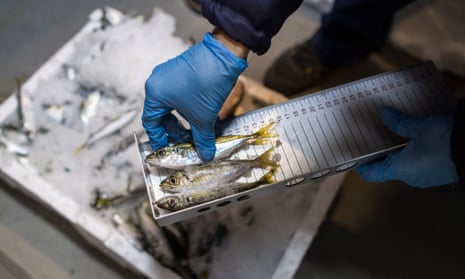Illegally fished seafood continues to end up on the plates of EU citizens due to weak controls and insignificant fines in some member states, auditors have found.
The European Union, the world’s largest importer of fishery products, requires member states to take action against fishing vessels and EU nationals engaged in illegal fishing activities anywhere in the world.
However, a special investigation [pdf], by the European Court of Auditors (ECA), the EU’s financial watchdog, into systems aimed at preventing products derived from illegal, unreported and unregulated (IUU) fishing reaching EU consumers, found them to be only “partially effective”.
“We need to tighten the net to illegal fishing within the EU,” Eva Lindström, the ECA member who led the audit, said Monday. She urged member states to step up the fight against IUU fishing, one of the greatest threats to marine ecosystems.
The EU and its member states had put in place control measures to keep illegal fishing in check, she said. “But in spite of those measures, these products keep ending up on EU citizens’ plates,” said Lindström. “One key reason is that checks and sanctions are applied unevenly by member states.”
National checks often detected instances of illegal fishing, the auditors found. But overfishing and underreporting of catches persist, due to weak controls in some states. Misreporting of catches is the most common infringement by the EU fleet, followed by fishing in closed areas or with no quota allocation, and using illegal gear.
While auditors found the vast majority of serious fishing infringements led to an investigation or prosecution, the sanctions applied in some states were insufficient to deter illegal fishing. There was also no level playing field across states, they said. The average fine imposed for infringements ranged from €200 (£180) in Cyprus, Lithuania and Estonia, to €7,000 in Spain.
A catch-certification scheme, introduced by the EU in 2008 to guarantee the legality of imported fish products, had improved traceability and reinforced import controls, they found. But differences in the scope and quality of checks in states risked undermining its effectiveness.
The auditors report recommended the European Commission ensure member states reinforce their control systems to prevent the import of illegal fishery products. The ECA was asked by the European parliament to report on the issue in 2021.
The investigation follows a 2020 report from the same auditors, which concluded that the EU’s efforts to protect the marine environment had resulted in measurable progress in the Atlantic, but the Mediterranean remained significantly overfished.
From 2015 to 2019, member states conducted more than 300,000 inspections; 13% identified at least one suspected infringement and 6% at least one suspected serious infringement. In total, 69,400 infringements were reported during this period, with more than 76% detected by just four countries: Italy (46%), the UK (12%), Greece (11%) and Spain (8%).
Approximately 94% of global fish populations are either exploited or fully exploited, according to the UN Food and Agriculture Organisation. Worldwide, illegal unreported and unregulated fishing is estimated to represent between 11% and 19% of catches, worth $10bn–$23bn (£9bn–£21bn).
